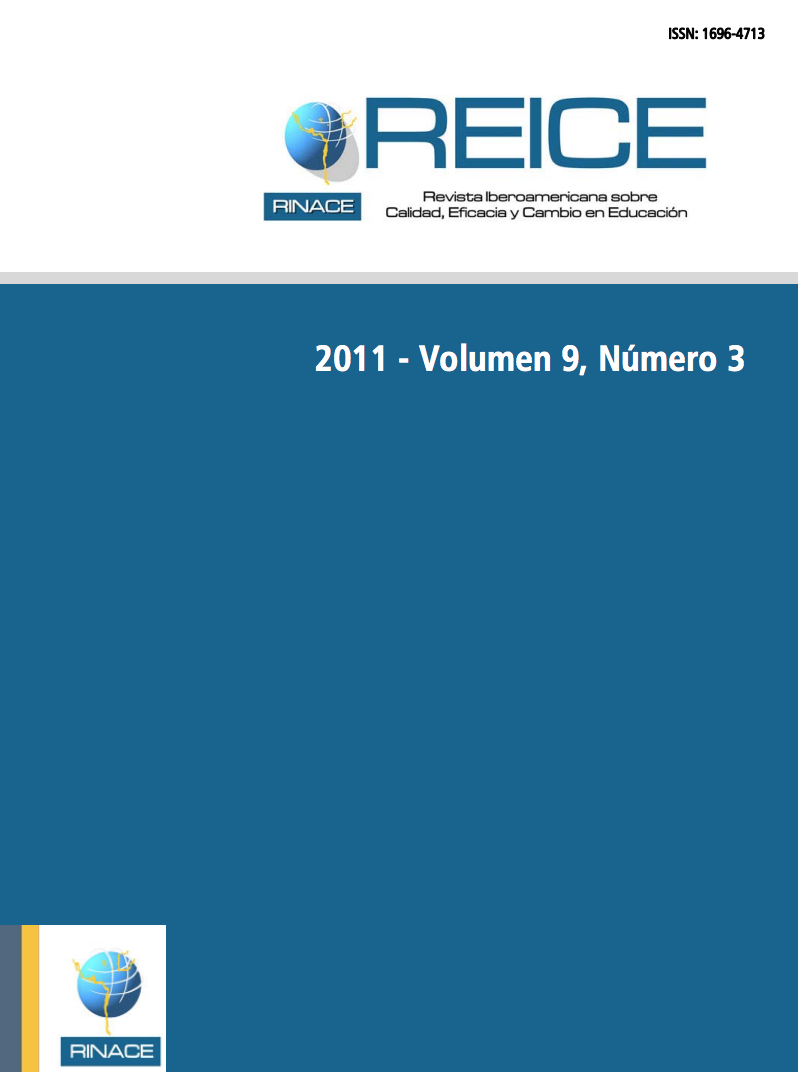Advantages and disadvantages of Learning Perceived by Undergraduate Students of the Mediated Face Teaching with PowerPoint ™: An Exploratory Study
Keywords:
traditional methods, advantages and disadvantagesCopyright (c) 2023 REICE. Revista Iberoamericana sobre Calidad, Eficacia y Cambio en Educación

This work is licensed under a Creative Commons Attribution-NonCommercial-NoDerivatives 4.0 International License.
Abstract
This work, in the foreground, makes a survey of the literature that discusses the use of PowerPoint ™ in the classroom, and a second, investigates (i) the preference of students on the adoption of the PowerPoint ™ when compared to some traditional resources such as the blackboard and overhead projector, and (ii) the advantages and disadvantages of new technology in the mediation of classroom teaching. The study was conducted at a private institution of higher education in the city of Curitiba-PR, by collecting 134 questionnaires inquire by students enrolled between the first and fourth years of Accounting Course. Analysis of the data were processed using Cluster Analysis, where two distinct groups identifier and the result of interrelationships among the variables investigated was obtained by the nonparametric Kruskal-Wallis. The research result shows that one of the groups had become more cohesive in agreement PowerPoint ™ as a mediator of classroom learning, and also agreement on the benefits of this software as part of the teaching methodology in the classroom, so the two groups existing students differed among themselves on the use of PowerPoint ™ in the classroom and the preference for the blackboard or overhead projector.Downloads
References
Apperson, J.M., Laws, E.L. e Scepansky, J. A. (2008). An assessment of student preferences for PowerPoint presentation structure in undergraduate courses. Computers & Education. 50 (1), pp. 148-153.
Ashton, D. (2009). Using Technology to Enhance an Automotive Program. Techniques: Connecting Education and Careers. 84 (1), pp. 34-36.
Bowman, L.L. (2009). Does posting PowerPoint presentations on WebCT affect class performance or attendance? Journal of Instructional Psychology. 36 (2), pp. 104-107.
Borba, M.C. e Penteado, M.G. (2001). Informática e Educação Matemática. Belo Horizonte: Autêntica Editora.
Craig, R.J. e Amernic, J.H. (2006) PowerPoint Presentation Technology and the Dynamics of Teaching. Innovative Higher Education. 31 (3), pp.147-160.
Creed, T. (2010). PowerPoint, no! Cyberspace, yes! The National Teaching and Learning [Série on-line]. Dispinível em: Doc. 6 (4), 1997.
Dancey, C.P., Reidy, J. (2006). Estatística Sem Matemática Para Psicologia – usando SPSS para windows. (3ª ed.) Porto Alegre: Artmed.
Gil, A.C. (2009). Como Elaborar Projetos de Pesquisa. São Paulo: Atlas.
Keefe, D.D. e Willet, J.D. (2004) Points of View: PowerPoint in the Classroom - A Case for PowerPoint as a Faculty Authoring System. Cell Biology Education. 3, pp. 156-158.
Knoblauch, H. (2008). The Performance of Knowledge: Pointing and Knowledge in Powerpoint Presentations. Cultural Sociology. 2 (1), pp. 75-97.
Lanius, C. (2004). PowerPoint, Not Your Grandmother’s Presentations, but Is it Evil?. Cell Biology Education. 3, pp. 158–160.
McDonald, K. (2004). Examining PowerPointlessness. Cell Biology Education. 3, pp. 160-161.
Nouri, H. e Shahid, A. (2008). The Effects of PowerPoint Lecture Notes on Student Performance and Attitudes. The accounting educators’ journal, XVIII, pp.103 -117.
Nouri, H. e Shahid, A. (2005). The Effect of Powerpoint Presentations On Student Learning And Attitudes. Global Perspectives on Accounting Education. 2, pp.53-73.
Raupp, F.M. e Beuren, I.M. (2008). Coleta, análise e interpretação dos dados. En: Beuren, I.M. (Coord.). Como elaborar trabalhos monográficos em contabilidade – teoria e prática. (3ª ed.) São Paulo: atlas, Cap. 3.
Richardson, R. J. (2007). Pesquisa social: métodos e técnicas. São Paulo: Atlas.
Rocklin, T. (2010). PowerPoint is not evil. The National Teaching and Learning Forum. Disponível em: Doc. 6.
Savoya, A., Proctorb, R.W. e Salvendya, G. (2009). Information retention from PowerPoint™ and traditional lectures. Computers & Education. 52(4), pp. 858-867.
Susskind, J.E. (2005). PowerPoint´s power in the classroom: enhancing student’s self-efficacy and attitudes. Computers & Education. 45 (2), pp. 203-215.
Szabo, A., Hastings, N. (2000). Using IT in the undergraduate classroom: should we replace the blackboard with PowerPoint? Computers & Education. 35 (3), pp. 175-187.
Voss, D. (2004). PowerPoint in the Classroom, Is it Really Necessary? Cell Biology Education. 3, pp. 155-156.
